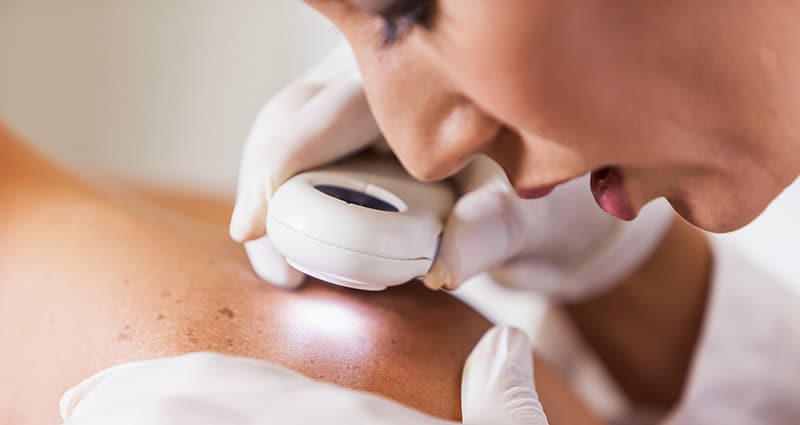Detecting skin cancer as early as possible gives you the best chance of successfully treating it. And the best way to detect skin cancer is to check your own skin regularly for suspicious-looking changes.
The prognosis and treatment options vary depending on what kind of skin cancer you have. There are three major types, each of them affecting different kinds of skin cells.
Basal cells are rounder-shaped cells beneath the surface of the skin.
Squamous cells are thin, flat cells on the skin’s outermost layer.
Melanocytes are the cells that produce pigment called melanin when exposed to the sun, causing you to tan.
If you see any changes to your skin that concern you, make an appointment with your doctor or a dermatologist.
The Most Common Type of Skin Cancer
Basal cell carcinoma is the most common type of skin cancer and it typically looks like a pearly or waxy bump, a flesh-colored growth, or a bleeding sore.
These most frequently appear on fair-skinned people after years of frequent exposure to the sun. They’re most commonly found on sun-exposed areas like the head, neck or arms.
Basal cell carcinoma accounts for more than 80 percent of skin cancer cases.
If left untreated, basal cell carcinoma can penetrate nerves and bones, causing damage and disfigurement.
The Second Most Common Type of Skin Cancer
Squamous cell carcinoma looks like a small irritated bump, a dried patch, or a wound that doesn’t heal. Again, people with lighter skin are most likely to get it, and it often appears on skin that gets a lot of exposure to the sun.
Squamous cell cancers typically grow slowly, but have a higher chance than basal cell carcinomas to cause subdermal damage.
The Deadliest Kind
Melanoma is the most dangerous kind of skin cancer because it’s the most likely type to spread and metastasize. Early diagnosis and treatment are crucial.
Melanoma can develop on an existing mole, or it can appear as a dark spot on your skin. It can appear as a large brown spot with dark speckles; or a mole that changes in color or size; or a lesion with an irregular border and parts that look red, pink, white or blue.
When melanoma occurs in people who have darker skin tones, it’s more likely to appear on parts of the body that aren’t exposed to the sun much, like the bottoms of the feet, or on the palm of a hand.
Sun Protection
Ultimately, sun protection goes a long way toward protecting yourself from skin cancer.
“Sun protection is your best defense against skin cancer and aging skin,” says Caitlyn Trotter Reed, MD, a dermatologist with St. Dominic’s Dermatology. “Choose a broad-spectrum sunscreen that has an SPF 30 or higher, and reapply every 90 minutes when you are outdoors. I also recommend wearing a broad-brimmed hat, sun protective clothing and seeking shade when possible.”
More Useful Information About Protecting Your Skin
Why You Should See a Dermatologist




